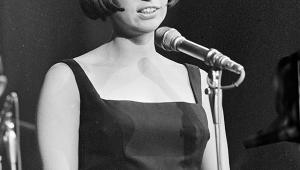| Columns Retired Columns & Blogs |
Beethoven's Diabelli Variations: the Finest Hour of Piano Music in the World Page 3
Needless to say, this is all speculation. Beethoven was, after all, a composer, and a pretty good one at that. Sophisticated internal organization is abundantly present. Many of the variations seem to lead almost organically into each other, such as the initial ten, the centerpiece, and, most notably, the last five. Perhaps the strongest evidence of a grand design can be found in the work's overall symmetry. The concluding 33rd variation pays homage to the tradition of repeating the theme at the work's conclusion, except that in this case, the simplistic waltz that began the piece is transformed into an elegant, transcendental minuet. If we therefore consider that there are only 32 "real" variations, we find that the two central variations, 16 and 17, are quasi-mirrors of each other. The entire set is thereby neatly divided in half, that division closely reflecting the structure of the 32-bar theme itself.

Another process is at work, too. Several of the earlier-composed variations are humorous and appear to poke fun at the waltz as well as at other music, including the opening aria of Mozart's Don Giovanni. However, it was during the work's later compositional phase that Beethoven seriously exploited the process of musical parody, not only in the sense of burlesque but in the larger sense of parody: using other works as a way of paying homage to them.
Thus, Var. 31 is clearly inspired by the florid Adagio 25th variation of Bach's Goldbergs (the two scores even look remarkably alike). Vars. 24 and 30, both fugues, have clear roots in baroque music as well. Var. 23 is a quasi-étude based on a famous one by J.B. Cramer, while Var. 25 is an old-fashioned German Dance. Most important, Beethoven even echoes himself: the coda of the final Var. 33 is reminiscent of the final pages of his own Piano Sonata 32, the principal theme of whose second movement—itself a set of variations—shares obvious melodic features with the Diabelli waltz.
Thus the Diabellis become far more than a "microcosm of Beethoven's art," as von Blow put it, but rather a microcosm of many styles of keyboard music, past and current, that reflect music history as Beethoven would have known it, including his own contribution to that canon.
The waltz itself is better than Beethoven's initial dismissal has led observers to believe. It is lively, unpretentious, and sufficiently neutral that it does not become overly tiresome on repeated hearings. True, it is as foursquare as possible: as indicated earlier, its 32 measures are divided into two symmetrical sections. Each section in turn is again divided in two distinct parts, and a case can be made for yet a further equal subdivision. Nonetheless, one can readily understand how the waltz's solid harmonic structure and motivic richness would ultimately appeal to a composer of Beethoven's inventiveness.
The opening four measures introduce three important and easily discernible elements. In the right hand, a short turn is immediately followed by a descent from C to G. That G is repeated ten times. In the left hand, a lilting alternation of the same C and G becomes the principal melody of the waltz. The phrase closes with a melodic turn in the left hand, one that nicely balances the opening one. Pretty elegant writing, that! In fact, of the other 50 composers who contributed individual variations, only Schubert was able to match Diabelli's inventiveness and augment our comprehension of the original theme.
It is now that the passage that Beethoven referred to as a "cobbler's patch" occurs: a stock sequence of three notes is "patched" into the music four times. This is where the waltz modulates from C to the dominant key of G major, after which the music draws to a half-close in the new key.
Following the double bar, everything proceeds almost identically—repeated chords in the right hand, the lilting melody in the left, then the "cobbler's patch," and finally the closing cadence—except that the piece now works its way from G back to C. Beethoven retains the key of C—mostly in major—in all but one of the variations. With very few exceptions, he also follows the basic formal pattern outlined above, although every so often, in order to keep us on our toes, he deliberately throws us off guard by changing a phrase length from four bars to three or five, and by eliminating an expected repetition of either or both sections.
However, what boggles the mind is the kaleidoscopic variety of treatment the waltz receives in Beethoven's hands. Take Var. 1, for instance: in many sets, the initial variation is not far removed in character from the theme, in order to establish the connection between the theme and the rest of the piece. But not here—the waltz is immediately and rudely transformed into a solemn, somewhat pompous March that seems to say, "Move over, kid, and let the pros take over."
Beethoven's inventiveness is particularly evident in the "cobbler's patch" sections, where he finds the most ingenious and devious ways to modulate from C to G (or a substitute key) and back. Equally astonishing is his seemingly endless ability to build variations whose texture is based entirely on just one of the three motifs. The opening right-hand turn does not simply begin several of the variations: it pervades them throughout. Similarly, the repeated notes become a principal feature of several variations, as in Var. 32. Interestingly, a dotted-rhythm motif, that first appears not in the waltz itself but in the march-like first variation, itself becomes the basis of several other variations, especially a cluster of them in the middle of the work (13, 14, 16, 17). In other variations, Beethoven intensifies the inherent differences between the two halves of each section; this process reaches its zenith in Var. 21, where each section is literally cloven in two, each part with its own tempo, mood, and time signature.
Rich as the entire set may be, it is the five concluding variations that provide the work's most sublime music. After the waltz has been pounded into dust in Var. 28, Beethoven begins reassembling his materials. He first introduces three slow variations in the minor key—each longer and more glorious than the previous one. This leads directly into the finest freestanding fugue Beethoven composed for the keyboard. That in turn dissolves into the final variation, in which the waltz is now transmogrified into a supremely elegant minuet whose coda echoes the thematic content and transcendental atmosphere that pervades the second movement of his final sonata. Finally, after the music fades into nothingness, a final C-major chord rings out like an exploding supernova. Beethoven's star has burnt itself out at last.
32 Variations on an Original Theme in C Minor, WoO 80: Beethoven turned his lack of charity toward certain compositions on himself earlier in his career. In 1807, he published the 32 Variations in C Minor that he had written the previous year, but deliberately omitted to assign it an opus number, thereby excluding it, at least in his mind, from his personally sanctioned canon. It is hard to understand why he so underestimated this piece. Perhaps, as it dated from a period in which he created some of his most heroic works, he felt it suffered in comparison to, say, the contemporaneous Symphony 5, the Piano Concerto 4, or the "Appassionata" Sonata, all of which share that famous so-called "Fate" motif.
The C-Minor Variations is Beethoven's only set of variations based not on a self-contained theme but on a continually repeating chord progression—much in the style of a baroque chaconne, with its chromatically descending bass line. However, there is nothing baroque about the individual variations: in their vivid rendering of drama, lyricism, pathos, and pianistic brilliance, they are pure Beethoven. Because each variation lasts at only a few seconds, the composer frequently groups some of them together so as to form larger units. Nevertheless, no single mood is permitted to hold sway for very long. Shifts of mood are frequent and dramatic in this effective keyboard showpiece.
- Log in or register to post comments



































